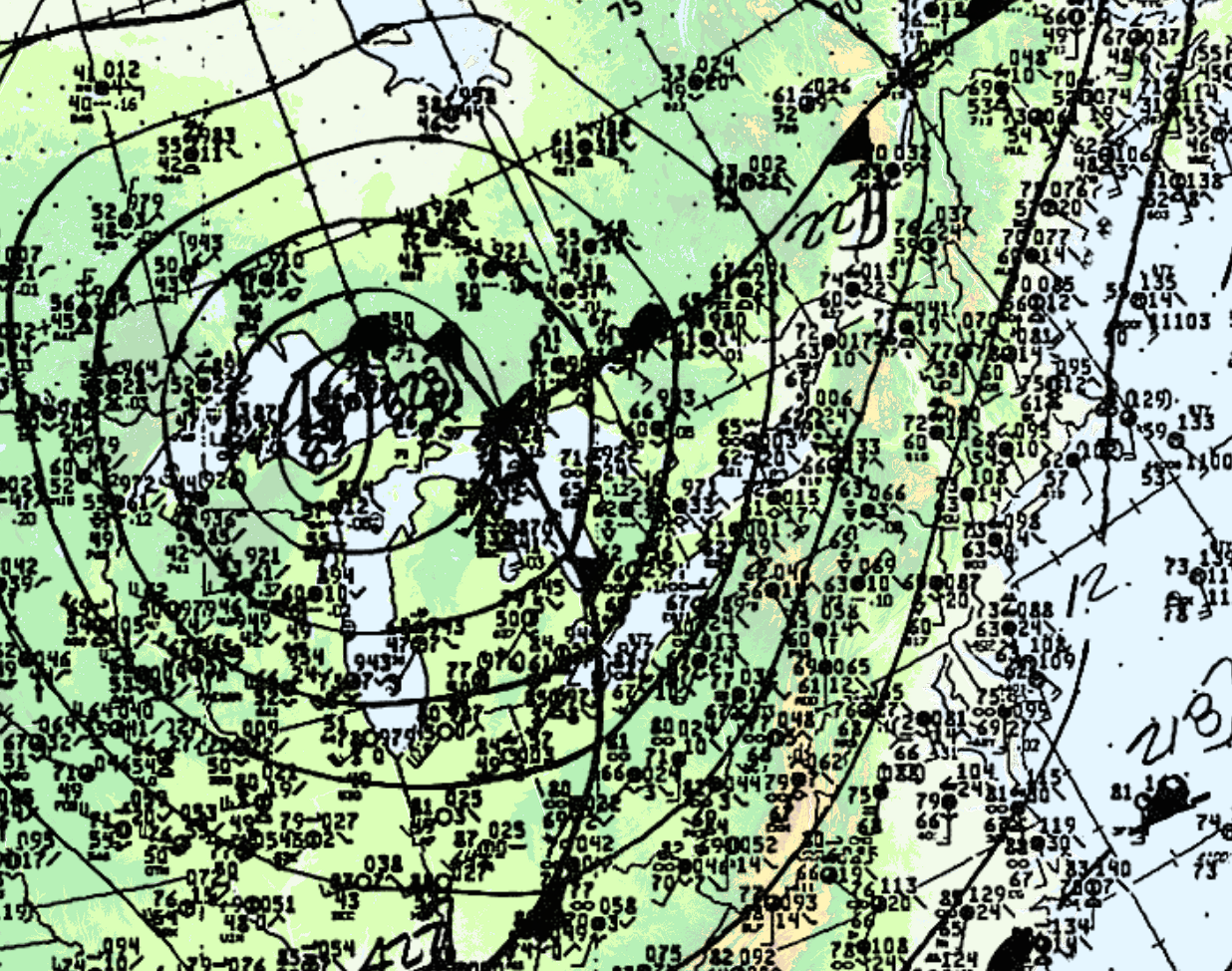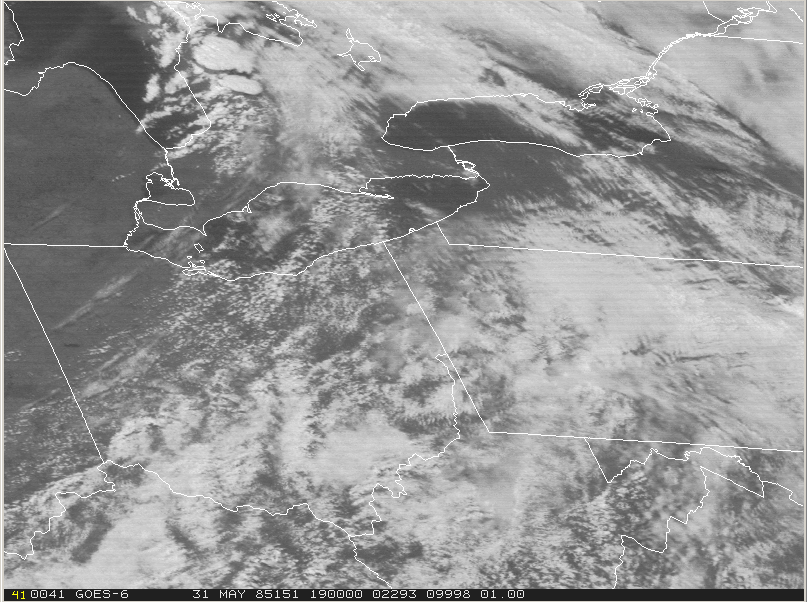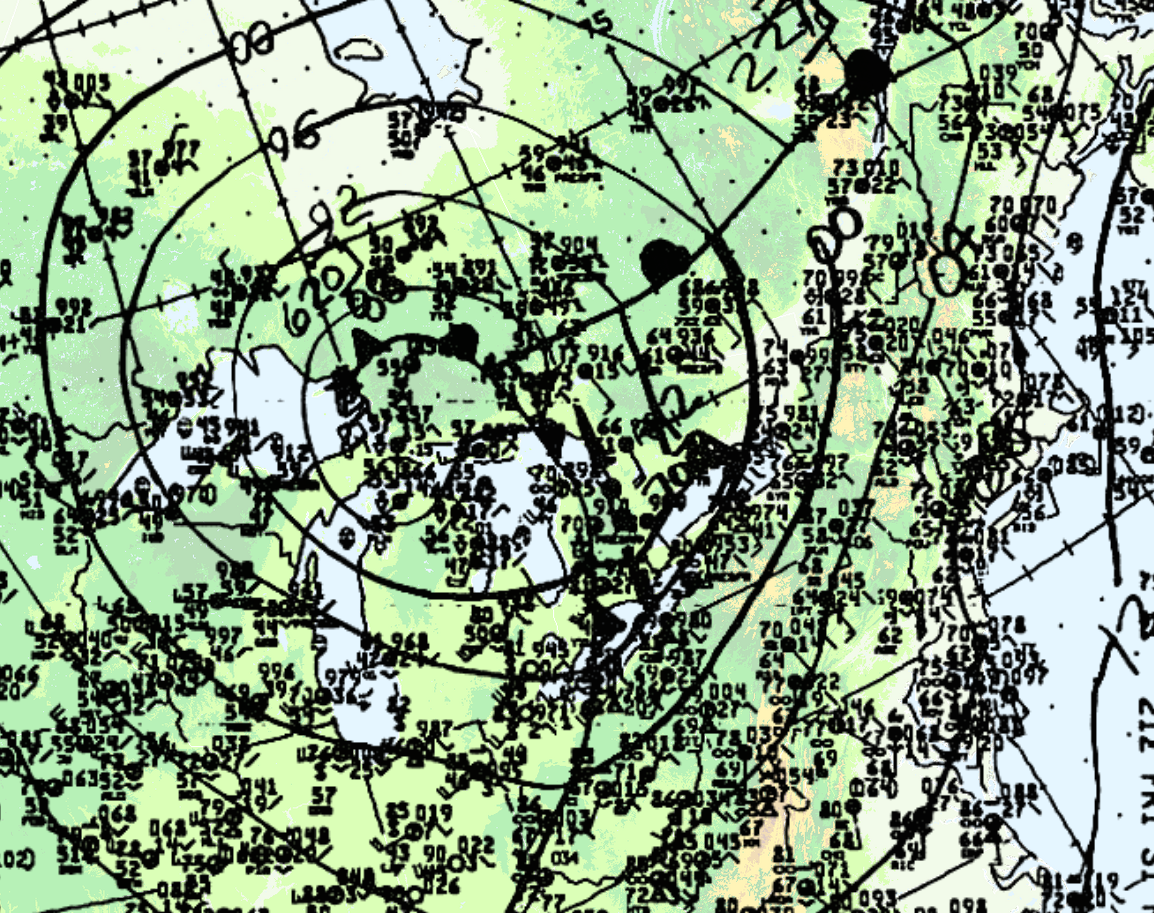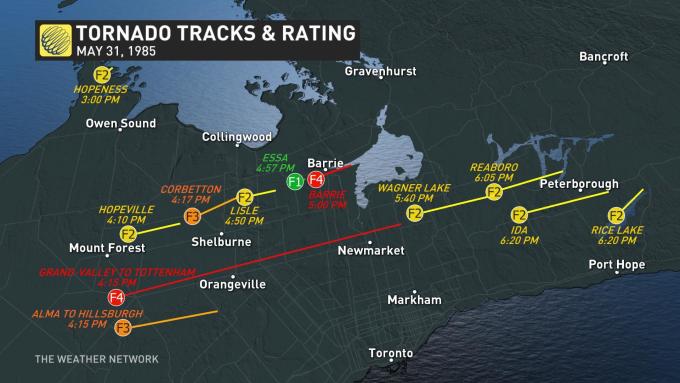According to Environment and Climate Change Canada, “fourteen tornadoes struck several Ontario communities, namely Barrie, Grand Valley, Orangeville and Tottenham. The Barrie tornado killed eight people. In all, the family of tornadoes injured hundreds of people, destroyed or damaged over 1,000 buildings and killed 12 people, tying it with the Pine Lake, AB tornado in 2000 as the fourth deadliest tornadic day in Canada. The Grand Valley tornado that began near Arthur and moved east to Campbellford is considered one of the longest tracked tornadoes in Canada, travelling over 115 km” (ECCC, 2017).
Only a couple minutes after the Grand Valley-Tottenham tornado had touched down, this strong tornado had established itself on the west side of Highway 10, one kilometre north of the hamlet of Corbetton, about 12 km NW of Shelburne. This was the result of the same robust cyclic supercell which had minutes before produced the Hopeville tornado. Almost immediately, this new tornado crossed Highway 10 and proceeded ENE over the sparely populated countryside. For the next 10 km, the tornado intensified significantly, destroying 15 barns and extensively damaging about 10 houses south of Redickville. As it crossed Highway 24 one brick farmhouse in this area took a direct hit from the tornado and had its roof and second story mostly removed, along with some of the first story. As well, a large farming operation was almost completely destroyed. Cars, trucks and heavy farming equipment were tossed up to 60 meters.
This tornado continued NE for another nine kilometres toward Ruskview where the supercell cycled again. Roping out, the tornado turned in towards the north as it crossed Sideroad 25 along the escarpment. After the storm passed, debris including signage from the Highway 24 area was found 20km to the NE in the village of Glencairn. Miraculously though, no injuries or fatalities were reported from this fierce tornado.
The Forecast

On the morning of May 31, 1985, warm air was advecting northward across Ontario. Figure 1 depicts the surface analysis on the morning of May 31st. In Figure 1, we can see a warm front advecting northward across Ontario and a cold front moving eastward (entering Michigan). The cold front would later provide the trigger for explosive supercell thunderstorm development. According to M. Leduc, O. Jacobsen and B. Greer (1986), “the morning analysis at Environment Canada’s Ontario Weather Centre (OWC) indicated that the thermodynamic and dynamic features necessary for the possible development of severe thunderstorms were present”. As a result, severe weather watches were issued at 2:40 am local time for Southern Ontario and extended for all of Southern Ontario at 7:00 am, 9:20 am and 1:50 pm, advising the population of potential severe thunderstorm development later in the day (Leduc et al., 1986).

At 18Z (2:00 pm EDT), the cold front was entering Ontario (Figure 2). According to Leduc et al. (1986), an unseasonably strong low pressure centre tracked across Northern Michigan during the morning hours to just north of Sudbury by evening. The visible satellite loop below shows the development and explosive growth of thunderstorms across Southern Ontario, Ohio, Western Pennsylvania and Western New York on the afternoon of May 31st.

At 21Z (5:00 pm EDT), the cold front was in Western Ontario (Figure 4).

Leduc et al. (1986) notes that the dynamics in place were strong since a sharp cold front (Figure 1, 2 and 4) and an upper trough was crossing Michigan, bringing with it strong westerlies in the upper-levels of the atmosphere.

Figure 5 and 6 depict the radar imagery from the King City radar (north of Toronto). At 1:40 pm (local time), radar showed the first thunderstorms developing west and north of the Bruce Peninsula. By 2:20 pm, a line of severe storms was indicated by radar (Figure 5). The first severe thunderstorm warning was issued at 2:25 pm for the Bruce County and Parry Sound District. At 3:15 pm, severe thunderstorm warnings were issued for Huron, Perth, Grey, Northern Wellington and Northern Waterloo Counties, with the most intense storms being seen from Meaford to Perth County (Leduc et al., 1986). At 4:00 pm, reports of 2-cm hail and very high winds were received at the OWC for the Meaford and Dundalk area. Around 4:00 pm, radar showed a line of severe storms extending from Collingwood to Eastern Perth County moving east at 60-70 km/h (Figure 6).

Between 4:20 pm and 4:40 pm, radar showed signs that the southern storms off the squall line were intensifying and therefore warnings were issued at 4:53 pm from Hamilton-Wentworth to Durham and Victoria counties. A tornado warning was issued at 5:00 pm for Southern Simcoe, Northern Peel and York counties after OWC received reports of a tornado at 5:00 pm and 5:20 pm. At 5:50 pm severe thunderstorm warnings were issued for the Niagara Peninsula. Tornado warnings were extended for Southern Durham and Peterborough counties at 6:05 pm and Haliburton, Northumberland, Prince Edward and Hastings counties at 6:25 pm. At 7:00 pm, warnings/watches were cancelled for all regions, except for Haliburton County and east of Oshawa, where tornado reports southwest of Peterborough and Rawden Township were received between 6:40 pm and 7:20 pm. A timeline of tornado occurrence, severe thunderstorm warnings and tornado warnings are presented in Table 1 below.

Recap

According to ECCC (2018), the Corbetton F4 tornado touched down at 4:15 pm local time near Corbetton, ON and tracked for 20.4 km, moving in a northeasterly direction and ending north of County Road 21. The maximum width of the tornado was 300 metres. ECCC (2018) did not catalogue any injuries, fatalities or damage associated with this tornado.
Sources
Environment and Climate Change Canada (2017). Top Weather Events of the 20th Century. Retrieved from: https://ec.gc.ca/meteo-weather/default.asp?lang=En&n=6A4A3AC5-1#tab5
NWS Weather Prediction Center (2017). North American Surface Analysis: Surface Analysis 12Z Friday May 31, 1985. Retrieved from: https://www.wpc.ncep.noaa.gov/html/sfc2.shtml
National Weather Service (2019). May 31, 1985 Tornado Outbreak: 34th Anniversary. Retrieved from: https://www.weather.gov/ctp/TornadoOutbreak_May311985#Meteorology
M. Leduc, O. Jacobsen and B. Greer (Winter 1986). The “Black Friday” Tornado Outbreak in Ontario. Chinook, 8, 13-18. Retrieved from: cmosarchives.ca/Chinook/ch0801.pdf
The Weather Network (2019). Massive Ontario tornado outbreak marks anniversary. Retrieved from: https://www.theweathernetwork.com/ca/news/article/anniversary-of-the-barrie-tornado-grand-valley-tottenham-may-31-1985-tornado-outbreak
Environment and Climate Change Canada (2018). Canadian National Tornado Database: Verified Events (1980-2009) – Public. Retrieved from: http://donnees.ec.gc.ca/data/weather/products/canadian-national-tornado-database-verified-events-1980-2009-public/?lang=en

